The best robot vacuums of 2025, tested by editors
CNN
The best robot vacuums we tested
Best robot vacuum: Roborock Q5 Max+ Robot Vacuum
Best budget robot vacuum: Eufy BoostIQ RoboVac 11s Max
Best robot vacuum for pet hair: iLife V3S Pro
The best robot vacuums can make your life easier by skillfully and thoroughly cleaning the floors in your home with little to no effort from you. Some are masters of artificial intelligence (AI) obstacle avoidance — smart enough to detect and steer clear of obstacles while vacuuming dirt and debris. Other robot vacuums are particularly adept at sucking up loads of pet hair, keeping your home free of fur and hairballs.
Some robots combine vacuuming with mopping thanks to their built-in water tanks. (But for this review, we’ve focused on vacuum-only models.)
We’ve spent years reviewing robot vacuums, from the original Roomba models to some of today’s most advanced machines. With another round of testing complete, we’ve reassessed which robot vacuums we feel are truly the “best” at navigating a living space, picking up dirt and simplifying your home cleaning routine. Below are three of the best robot vacuums we’ve ever tested that meet those expectations and are worth investing in.
Roborock Q5 Max+ Robot Vacuum
Best robot vacuum

If you’re looking for a vacuum-only robot floor cleaner with powerful cleaning capabilities and an intuitive app, and don’t mind doing a quick pickup before you run the vacuum, then the $600 Roborock Q5 Max+ Robot Vacuum is the best you can buy right now.
Eufy BoostIQ RoboVac 11S Max
Best budget robot vacuum
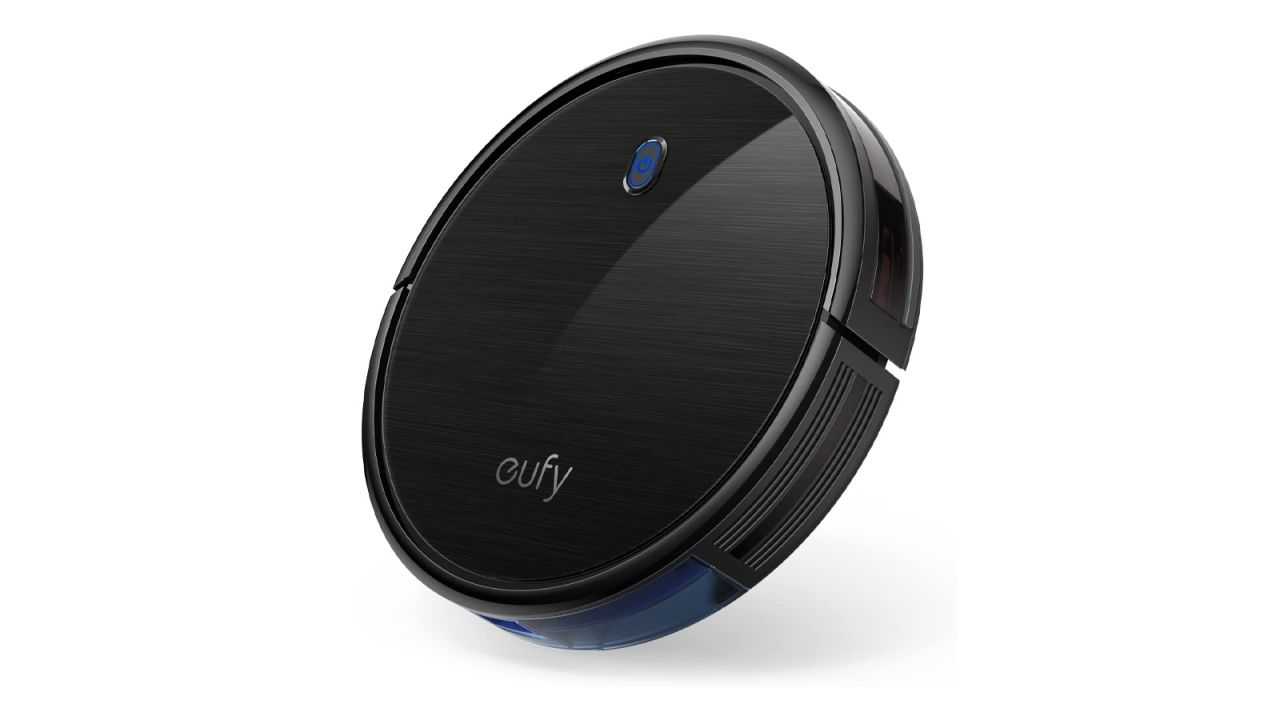
The Eufy BoostIQ RoboVac 11s Max may not be a smart vacuum, but its brute force approach covered our test area almost as well as the connected robots we tested. Plus we liked how quiet the Eufy is and how it’s slim enough to reach under most furniture, doing a great job cleaning.
iLife V3S Pro
Best robot vacuum for pet hair

A powerhouse when it came to cleaning pet hair, the affordable iLife V3S Pro’s strong suction did a superb job on the cat hair that was all over our hardwood floors. We like how it returned to its charging base when the battery ran low and then finished the job once charged.
Best robot vacuum: Roborock Q5 Max+ Robot Vacuum
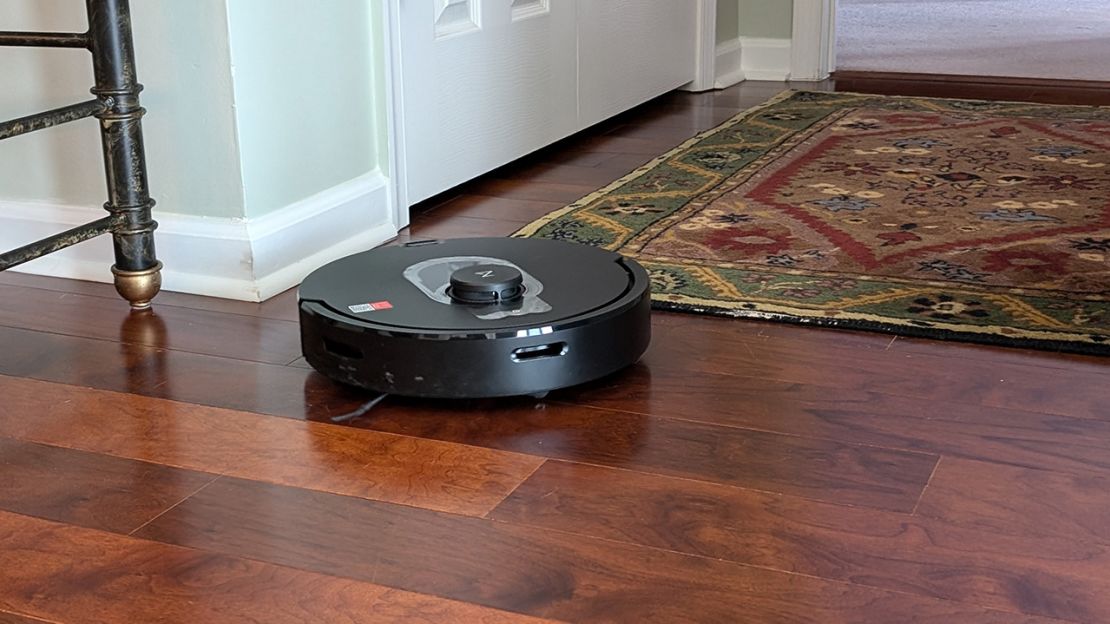
Andrea Smith/CNN Underscored
We recently named Roborock’s S8 Max V Ultra our top pick in our best robot mops tested roundup, so we had high expectations when testing Roborock’s non-mopping model, the Q5 Max+ Robot Vacuum -— and it didn’t disappoint.
The Roborock Q5 Max+ Robot Vacuum has powerful cleaning performance (5,500 Pa suction), an intuitive app that is easy to use, improved mapping and an automatic, dust-emptying charging base. With a $600 price tag, we think it’s the best robot vacuum available.
Roborock ramped up the cleaning efficiency in the Q5 Max+ Robot Vacuum in several ways, bringing it more on par with the cleaning ability of the iRobot Roomba j9+ robot vacuum we’ve also tested. The Roborock Q5 Max+ model now has a second roller brush (its predecessor, the Q5+, had only one brush), which helps pull dirt and debris from carpeting and hard floors.
The Roborock Q5 Max+ Robot Vacuum has a self-emptying, 2.5L dust bag that holds up to seven weeks’ worth of debris while filtering allergens in the home. It also now has a whopping 240 minutes of runtime, and it was able to clean our 1,500-square-foot test home in one run.
Roborock’s thoughtful app makes the cleaning experience intuitive and smooth. Its faster mapping ability (it took less than 15 minutes to map the whole home) was accurate and reliable. Once our rooms were fine-tuned and named, the app offered smart suggestions for no-go zones that might cause the robot to get tripped up or stuck. Unlike the Shark Detect Pro we tested, the Roborock Q5 Max+ offers more advanced customization options such as scheduled cleaning for individual rooms and custom suction power for each room.
If you have more than one floor in your home, the app allows for multi-floor mapping. Of course, you’ll need to carry the robot up and down the stairs; it has smart sensors that keep it away from steps on its own.
The option to turn off self-empty mode or set DND (do not disturb) times to avoid hearing the loud sound it makes when it empties the dustbin is a bonus, something the iRobot Roomba j9+ doesn’t offer. (I mean, nothing like having a huge whooshing sound like a plane taking off wake your family members or interrupt a work call, am I right?)
However, the Roborock Q5 Max+ Robot Vacuum isn’t perfect; it can’t compete with the iRobot Roomba j9+’s navigation and obstacle avoidance capabilities. The forward-facing camera on the $900 iRobot Roomba j9+ helps it recognize obstacles as it moves around the house, steering clear of things like power cables, cats and, most importantly, pet poop. While the more premium Roborock S8 Max V Ultra uses artificial intelligence (AI) avoidance, the Roborock Q5 Max+ Robot Vacuum has no camera and instead uses LiDAR laser navigation to make its way through the home. It worked well in our testing, avoiding most, but not all, the obstacles we placed in its way.
Best budget robot vacuum: Eufy BoostIQ RoboVac 11S Max
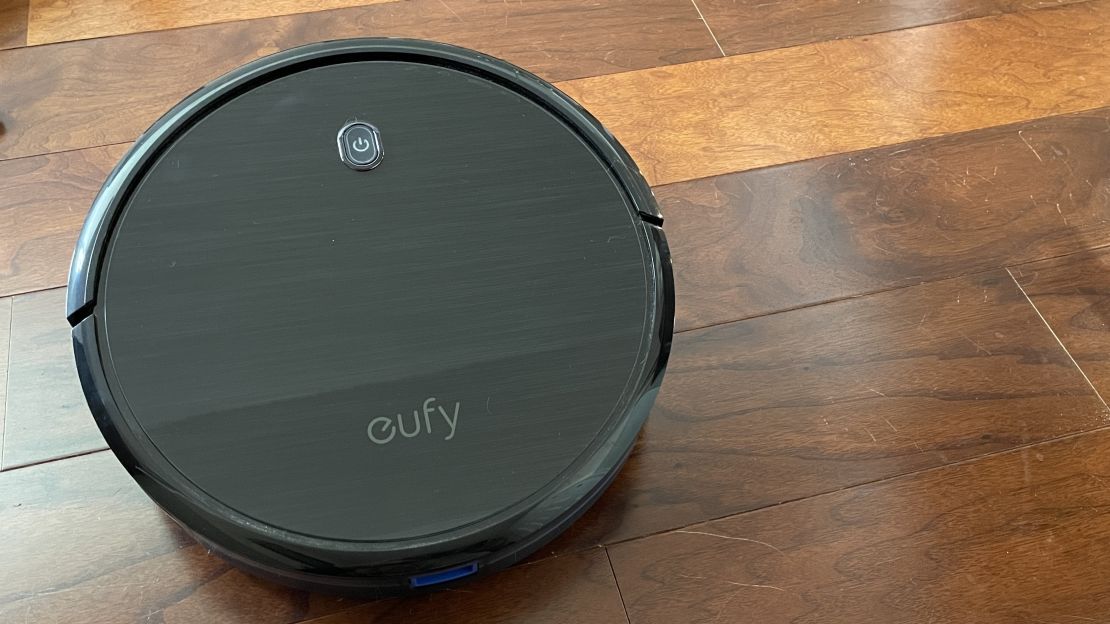
Andrea Smith/CNN Underscored
If you don’t want smart features like mapping, don’t need a self-emptying dustbin and don’t mind picking up before you start the vacuum, the Eufy 11S is the budget robot vacuum we recommend. It’s a basic and affordable vacuum with a slim profile, good suction and quiet operation, and should work well for anyone who wants to maintain their floors in between manual vacuuming.
The Eufy does a superb job picking up dirt, excelling on hardwood floors, tile and low-pile carpets. It filled its dustbin with pet hair and cat litter, though it wasn’t able to get up all the litter on a higher-pile carpet.
What sets the Eufy 11S above the budget competition is the ability to change the power level while the unit is cleaning. It offers Standard, Boost IQ and Max. This is the only unit we tested that lets you change the power and suction level while the vacuum is operating. The more expensive Shark IQ XL can only be changed with the remote when the unit is stopped. I appreciated this feature as I was able to turn on Boost IQ and then Max when the vacuum got close to the living room, which has a medium-pile carpet. It performed admirably climbing up onto the carpet to clean, though it did get stuck several times on the base of my barstools and had to be rescued.
Unlike our overall pick, the Eufy 11S doesn’t have any smart mapping features, so you can’t create a map or direct it with Alexa or Google — it’s a classic “bump bot” and finds its way by random or bounce navigation, running in a straight line until it bangs into an obstacle like a table or chair leg. This ends up in surprisingly good overall coverage, but you may find that some areas that trap the robot (under a table, for instance) get lots of attention, and more open areas (like the middle of the living room) just get one quick pass.
It took a few hours for the vacuum to fully clean my entire home, which is about 1,500 square feet, and watching as it maneuvered in and out of my office several times for varying lengths of time made me a little frazzled, but to get smart linear navigation, you’ll need to spend at least $200 more.
Luckily the Eufy has a recharge and resume feature, so if it runs low on battery, it makes its way back to the base to recharge itself and when ready resumes the cleaning job. In our testing this worked well, except for the fact that it resumed right in the middle of a dinner with friends, but it was easy enough to stop the cleaning run by pressing the button on the vacuum.
The Eufy is smart enough to keep itself from getting into trouble — in our testing, it had no trouble detecting stairs with a combination of infrared sensors and anti-drop sensors. And at just 2.8 inches tall, the Eufy 11S is almost a full inch shorter than the slightly more expensive Roborock S4, allowing it to get under more furniture like console tables and kids’ beds.
The dustbin on the 11S needs to be emptied manually, like others in this price range. It’s easy to open and empty, even easier than the higher-end Shark IQ XL. Since there’s no indicator to show when the bin is full, we recommend emptying it each time it returns to the base to recharge. This ensures the bin won’t fill up mid-cleaning run. You’ll also get the satisfaction of seeing how much dirt and pet hair the vacuum picks up that you might not otherwise be able to reach.
The included remote lets you create a schedule for the vacuum; however, you can only set a single daily schedule. Otherwise, you can either press the button on the machine itself to start a cleaning job or use the remote, which comes with a handy guide to the button symbols on the back. There are five different cleaning modes to choose from: Auto sends the vacuum from room to room, Spot cleans a specific area and Edge will send the vacuum hugging the walls of your house for perimeter cleaning. You can also choose a single room or pilot the robot with the directional arrows on the remote.
If you live in a home without high-pile carpets and find yourself constantly vacuuming up pet hair or dirt, and don’t need the ability to map your home and create virtual walls or no-go zones, the Eufy 11S is a top choice.
Best robot vacuum for pet hair: iLife V3S Pro
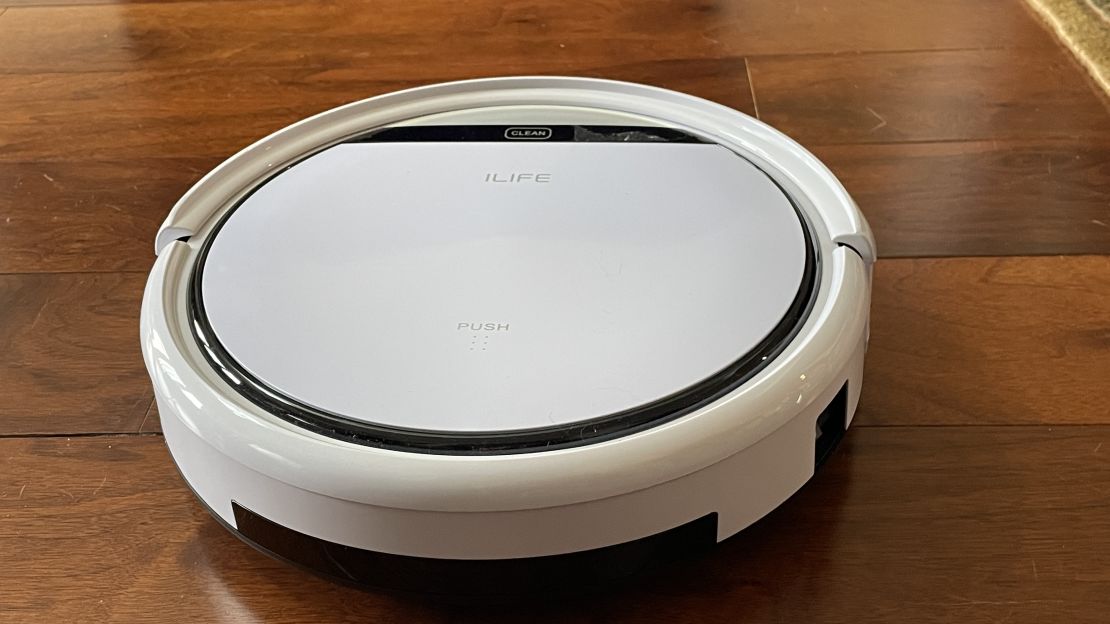
Andrea Smith/CNN Underscored
If your main struggle is keeping up with pet hair and small pieces of debris like cat litter, you don’t need to spend hundreds of dollars to get a well-performing robot vacuum. In our testing, the iLife V3S Pro did the best job on cat hair and cat litter on our hardwood floors.
The V3S Pro uses a small suction opening to scoop up debris, much like a regular vacuum, instead of the spinning roller brush on the bottom used by most robots. While the suction isn’t the strongest I’ve seen on devices in this price range, it avoids having hair and carpet threads build up and get stuck in a brush, and therefore helps it pick up more hair and dirt. Two side brushes with three bristles each push hair and dirt into the robot’s path, and do a great job.
Like the Eufy 11s, this vacuum uses random, or bump and run navigation, so while it does take time to clean the house, it covers every room. Again like the Eufy, it returns to the charging base if it runs out of battery before the house is finished and then resumes the job once fully charged. Infrared sensors keep it off the stairs, though like other bump bots, it can’t avoid obstacles like lamp cords.
The iLife V3S Pro was able to transition easily from a rug to a floor and back up onto the rug without any problem. Because of its low 11.8-inch-by-3-inch profile, it also fits under a dresser that the Shark IQ and iRobot j7+ couldn’t get under.
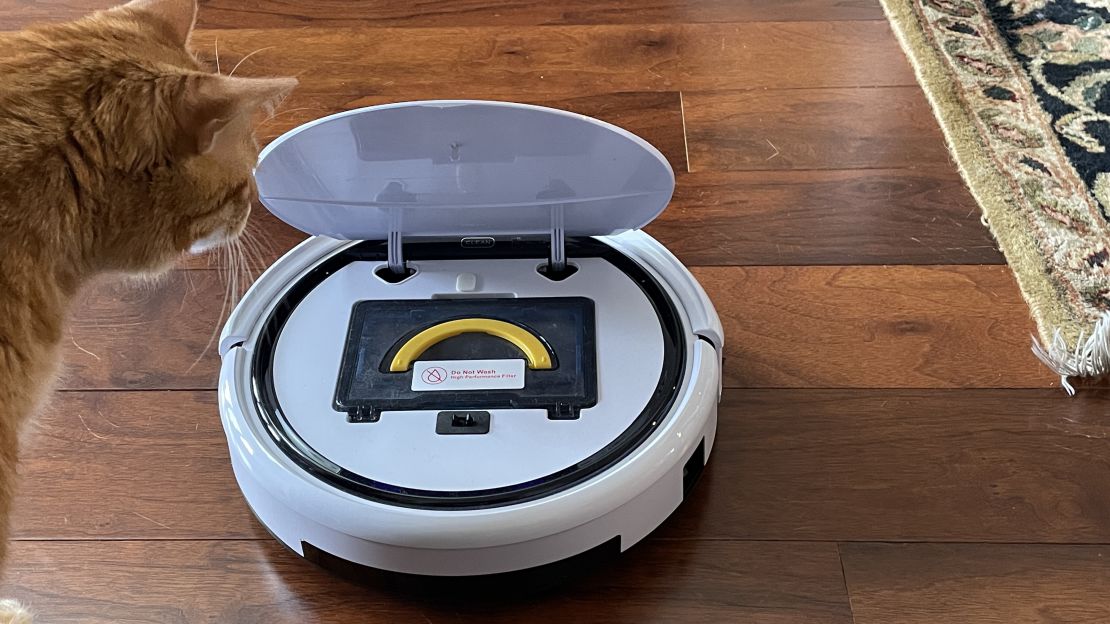
Andrea Smith/CNN Underscored
Though it doesn’t alert you when the bin is full, it’s easy to access the dustbin from the top of the unit, right under the cover (most other vacuums have it located on the side).
As with other inexpensive robots, you can only set a single daily schedule; the V3S Pro also offers three cleaning modes — whole floor, spot and edge — accessible from the included remote.
If you’re a pet parent who needs help keeping hardwood, tile or low-pile carpeting fur-free, the iLife V3S Pro is the right vacuum for you. If getting pet hair out of high-pile carpeting is a priority, you should step up to the iRobot 694, which has two brush rollers that work great on higher-pile carpets, but that will cost you about $100 more and the iLife does a better job overall.
How we tested
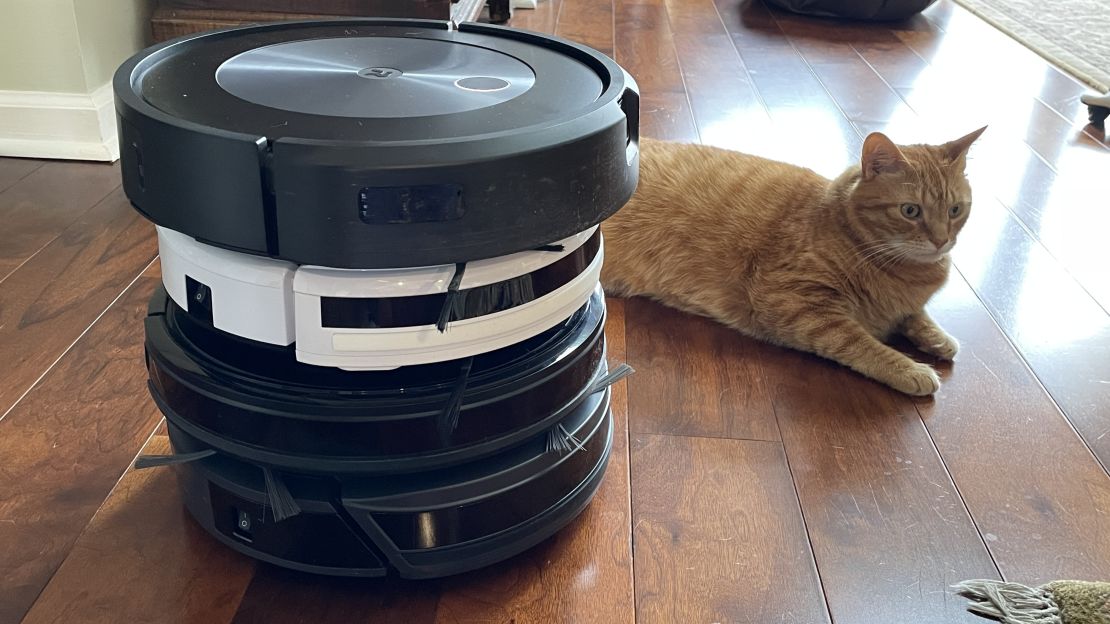
Andrea Smith/CNN Underscored
After researching which robot vacuums to test, we chose 13 models with various features and prices. (For this roundup, we looked at vacuum-only models; if you’re interested in combination robots that can vacuum and mop, read our best robot mops guide instead.)
Our test house was an approximately 1,500-square-foot home with two cats, kitchen tile, hardwood floors, low-pile rugs and high-pile carpet. We sent each robot vacuum on multiple runs over our floors covered with everyday dirt and debris, followed up with multiple runs to see how well they picked up cat litter and pet hair. We assessed all the models on the following criteria:
Unboxing and setup
- App download: We set up each robot vacuum, following each model’s directions. Some required us to download an app and create an online account.
Design and build
- Dust bin type: We noted whether a vacuum had a self-emptying or onboard bin only.
- Base size: We assessed how easy it was to place each vacuum’s base considering its size and height.
- Height of unit: Its height would affect a vacuum’s ability to maneuver under furniture and reach tight spaces so we noted each model’s height.
- Attachments: We noted the number and type of brushes that came with each vacuum.
Performance
- Suction power: We noted how well each vacuum could pick up everyday dirt and debris.
- Navigation style: We noticed how each robot vacuum mapped out a space, creating the most effective possible path to ensure coverage without repeating its efforts.
- Navigation agility: Each vacuum was judged on how well it was able to navigate furniture, corners and other obstacles.
- Cleaning effectiveness: We noted how well each vacuum cleaned various surfaces, including hardwood floors, tile, low-pile rugs and high-pile carpets.
- Pet-related dirt: Each robot vacuum was judged on how well it picked up pet hair and litter.
- Noise level: We listened carefully to how loud each robot vacuum was while vacuuming.
- Returning to base: We noticed how well each model was able to quickly and independently return to its charging base.
Usability of apps
- App-based control: Were we able to remotely control each vacuum easily using an app?
- Ease of use: For the robot vacuums with apps, we noted how intuitive and simple to use each map was.
- Mapping ability: We assessed how well each app mapped out a plan for cleaning.
- Boundary setting: We judged each app on the ease of setting virtual no-go boundaries where we could tell the app to always avoid certain areas.
- Cleaning scheduling: We noted whether or not an app let us schedule cleaning runs.
- Individual areas: Could we schedule cleaning of individual spaces in our house was another thing we noted for each app.
How to choose a robot vacuum
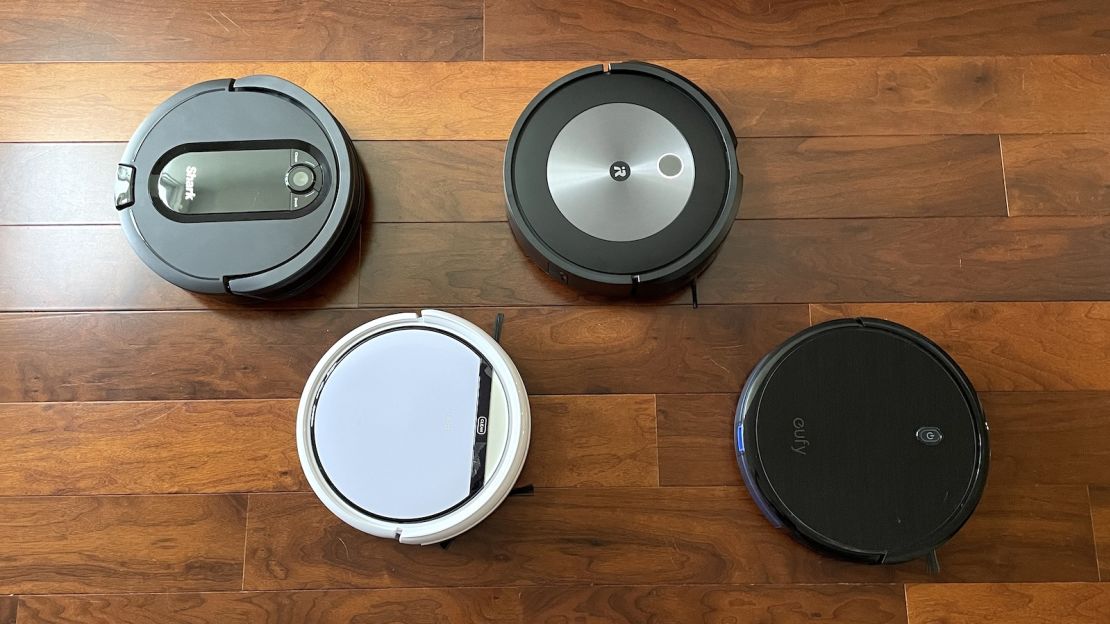
Andrea Smith/CNN Underscored
Consider the layout of your home and whether you have mostly hardwood floors or deep-pile carpeting. If you live in a Victorian-style home or have medium- to high-pile carpeting, then a robot vacuum will likely require a lot of input from you. However, if you live in a more modern, open-flow style of home with tile or hardwood floors, then a robot vacuum is a great option. You’ll also want to ask yourself how much time you want to devote to prepping the house before you vacuum.
If you don’t mind picking up toys and lamp cords and anything else that might get in the way or get snarled in the roller brush, then you can get one of the more affordable robot vacuums. These robots — such as our most affordable robot vacuum recommendation, the Eufy BoostIQ RoboVac 11s Max — typically run in a random “bump and run” fashion, and don’t have any smart mapping features. As a result, they’ll run for a long period to clean the whole house instead of progressing intelligently from room to room.
If you’re not willing to devote the time to prepping the house, opt for a robot that uses AI obstacle avoidance that is smart enough to detect and steer clear of obstacles. Spending the time during the initial setup, mapping your home and creating in-app “no-go zones” will save you the hassle of decluttering each time you run the vacuum.
You’ll pay more money for these models but you get the capability of setting schedules, designating specific rooms to be cleaned and using smart home voice assistants like Alexa and Google Assistant to control your vacuum. How are you with touching dirt and pet hair clumps? If you don’t mind emptying the dustbin after every cleaning run, a standard robot vacuum is best. If you’d prefer never to touch the dirt, opt for the self-emptying models that automatically empty themselves into a bag or bin. The bag usually only needs to be changed every 60 days or so.
Consider if a robot vacuum is worth it for you
If you’re pressed for time or have a pet who sheds, a good robot vacuum is a worthwhile investment. They’re particularly great for pet owners, since even if you depend on a traditional vacuum cleaner, a basic robot vacuum can stay on top of the hair, dander and litter daily, making your chores a little easier once you get around to deep cleaning.
However, as independent as they can be, a robot vacuum requires time and input from you. The newer models require you to set up a map and define the zones of your house you’ll want them to clean or stay away from, and even the best robot vacuum can get stuck and need human intervention.
Robot vacuums won’t completely replace an upright vacuum, canister vacuum or cordless stick vacuum with cleaning attachments. Even the most advanced models can’t get into every crevice and hard-to-reach space, and they can’t vacuum upholstery, drapes, closets, drawers and kitchen cabinets.
They can, however, get under beds, dressers and couches and reach some places the uprights can’t go, making them a solid investment that can stay ahead of dust and dirt build-up. How much of an investment depends on how much you want it to do. Newer and more expensive models have better navigation capabilities and use artificial intelligence (AI) to avoid commonly left-out items like cords and running shoes.
While older models aren’t great at taking care of household accidents, the latest models have features such as spot cleaning and the ability to clean up small liquid messes. There are even premium robots that identify and avoid pet poop, keeping an accident from getting way worse.
For cleaning up larger liquid spills or mopping the kitchen floor, consider a robot vacuum/robot mop hybrid model. These relatively new robots add a mopping component to the arsenal of floor-cleaning tools; they are worth the higher price tag if you live in a home with lots of hardwood or tile floors.